National Archives Announces Death of Legendary Archivist John Taylor
September 24, 2008 by Chris
Filed under Articles, Latest News, Public Records
 Sad News from the National Archives, A press release September 23, 2008, announces the passing of archivist John E. Taylor. Best known for his “encyclopedic knowledge” on the subject of World War II intelligence records, Mr. Taylor, an employee of the National Archives for 63 years passed away in his home on September 20th, he was 87 years old.
Sad News from the National Archives, A press release September 23, 2008, announces the passing of archivist John E. Taylor. Best known for his “encyclopedic knowledge” on the subject of World War II intelligence records, Mr. Taylor, an employee of the National Archives for 63 years passed away in his home on September 20th, he was 87 years old.
It was in September of 1945, the week that WWII formally ended that John E. Taylor began his career with the National Archives; a career highlighted by many honors and awards including the (OSS) Office of Strategic Services, Society Distinguished Service Award and a lifetime achievement award from the Scone Foundation, established by Stanley Cohen; an award that honors unknown professionals for their important contributions.
In a Washington Times Article from 2003 Mr. Taylor was referred to as a “Wizard of Research” Through his many years at The National Archives he aided thousands of persons with their research from students to best selling authors.
Mr. Taylor was born in Sparkman AR, in 1921. While still a student at the University of Arkansas he wrote the Civil Service exam in 1945 but was precluded from military service due to blindness in one eye.
Mr. Taylor is predeceased by his wife Dolly to whom he was married 44 years and a brother James; he is survived by his niece, Claudia Taylor Walsworth of Ketchum, ID and Nephew James E. Taylor Jr. of San Ramone, CA. Memorial services are planned for mid October.
For the full story visit: The National Archives: Press Release September 23 2008.
…
Where to Next?
Blank Family Tree with Step-by-Step Instructions
…
St. Andrew’s Cemetery; Darien, Georgia
September 17, 2008 by Chris
Filed under Articles, Cemetery Searches, Genealogy Cemetery Searches, Genealogy Records 101
 The poetic inscription at the beginning of this article about St. Andrew’s Church Cemetery in Darien, McIntosh County, Georgia, reads:
The poetic inscription at the beginning of this article about St. Andrew’s Church Cemetery in Darien, McIntosh County, Georgia, reads:
“At the end of this avenue, on high land overlooking the creeks and marshes, Thomas Spalding of Sapelo established his family burial ground.”
This short article is part of the Historical Marker Database recently uploaded from Southern Graves, a website dedicated to the history, research and preservation of Southern U.S. cemeteries and burial sites large and small.
The site contains Southern cemetery listings, directories, and a broad and wondrous selection of articles; from the humorous to the heartfelt and beyond. The site also contains a link to a remarkable must read Blog filled with winning and always interesting subject matter.
This site is not only a treasure to genealogists but should be commended for the spirit in which it is presented, respectful, yet full of the human experience.
A must read for all! Beautifully done!
I highly recommend a visit to Southern Graves Home.
…
Where to Next?
…
An Irish Culinary Tradition – Edible Seaweeds
September 14, 2008 by Chris
Filed under Articles, Family History, Preserving Your Family Tree, Public Records
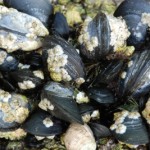 I grabbed this recipe from The Ballycastle Blog: Irish Genealogy and More. Found it so interesting I thought I’d share it with you. The time of the Great Hunger or (The Gotta Mór); Ireland 1845-7, was a bleak time in Irish history. With widespread crop failures and disease that devastated an already weakened people, seaside communities could turn to the sea and thus managed a little better. While men fished, women with their children in-tow hunted the beaches during low tides gathering the numerous varieties of shellfish and seaweeds. A species of seaweed known as Sleabhach which grows from fall to spring on rocks became a staple.
I grabbed this recipe from The Ballycastle Blog: Irish Genealogy and More. Found it so interesting I thought I’d share it with you. The time of the Great Hunger or (The Gotta Mór); Ireland 1845-7, was a bleak time in Irish history. With widespread crop failures and disease that devastated an already weakened people, seaside communities could turn to the sea and thus managed a little better. While men fished, women with their children in-tow hunted the beaches during low tides gathering the numerous varieties of shellfish and seaweeds. A species of seaweed known as Sleabhach which grows from fall to spring on rocks became a staple.
This seaweed is something many of us are familiar with in sushi dishes; you might know it as Nori; today a major Japanese crop worth millions of dollars.
Try out this old Irish recipe’ and impress your Japanese friends.
Sleabhach agus Ruacháin
(Slough-uck a-guss Roo-caw-in)
Nori and Cockles
Ingredients per individual serving
3-4 oz. Nori
15 – 20 Cockles
Butter
Milk.
Cook the Nori in milk for an hour. Cook the cockles in their own juice. If the Nori sheets have not broken up put them in a food-processor for a few moments Serve with a Nori mound in the centre, pour over it a little of the cockle juice and top it with a generous blob of butter. Surround the Nori with the cockles and serve.
I have never seen Nori or the inside of a sushi restaurant, but believe it should work. The original is delicious and cockles go particularly well with “Sleabhach” though other types of shellfish were also used. Perhaps someone who tries the recipe might post his or her culinary review.
See additional Irish family history articles and lessons learned in earlier posts below and in the archives.
This posting is from The Ballycastle Blog: Irish Genealogy and More.
…
Where to Next?
Cemetery for Cubs Fans
 You read that correctly, yes, a cemetery for Cubs Fans. That is the latest news from Southern Graves. It seems however that everyone is a-buzz with this news. In an article from the Chicago Tribune:
You read that correctly, yes, a cemetery for Cubs Fans. That is the latest news from Southern Graves. It seems however that everyone is a-buzz with this news. In an article from the Chicago Tribune:
“Cubs fans hoping for a World Series title before they die at least can be buried in a place that looks like Wrigley Field when they do.”
Beny Lipsman for the Chicagoist writes in his article “Pushing Ivy?”
“Marriage may be til death do us part, but apparently allegiances to one’s baseball team last even longer.”
Filed under Odd News the article titled “Cemetery gives Cubs fans burial site” from United Press International covers the story by saying, “Ground was broken Friday for a burial site at a Chicago cemetery modeled after a portion of landmark Wrigley Field to accommodate die-hard Chicago Cubs fans.” This could definitely make for some interesting genealogy research in years to come.
To read the full article visit Southern Graves
…
Where to Next?
…
An Irish Culinary Tradition – Edible Seaweeds
September 11, 2008 by Chris
Filed under Blank Family Tree
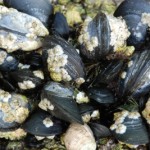 I grabbed this recipe from The Ballycastle Blog: Irish Genealogy and More. Found it so interesting I thought I’d share it with you.
I grabbed this recipe from The Ballycastle Blog: Irish Genealogy and More. Found it so interesting I thought I’d share it with you.
The time of the Great Hunger or (The Gotta Mór); Ireland 1845-7, was a bleak time in Irish history. With widespread crop failures and disease that devastated an already weakened people, seaside communities could turn to the sea and thus managed a little better. While men fished, women with their children in-tow hunted the beaches during low tides gathering the numerous varieties of shellfish and seaweeds.
A species of seaweed known as Sleabhach which grows from fall to spring on rocks became a staple. This seaweed is something many of us are familiar with in sushi dishes; you might know it as Nori; today a major Japanese crop worth millions of dollars.
Try out this old Irish recipe’ and impress your Japanese friends.
Sleabhach agus Ruacháin
(Slough-uck a-guss Roo-caw-in)
Nori and Cockles
Ingredients per individual serving
3-4 oz. Nori
15 – 20 Cockles
Butter
Milk.
Cook the Nori in milk for an hour. Cook the cockles in their own juice. If the Nori sheets have not broken up put them in a food-processor for a few moments Serve with a Nori mound in the centre, pour over it a little of the cockle juice and top it with a generous blob of butter. Surround the Nori with the cockles and serve.
I have never seen Nori or the inside of a sushi restaurant, but believe it should work. The original is delicious and cockles go particularly well with “Sleabhach” though other types of shellfish were also used. Perhaps someone who tries the recipe might post his or her culinary review.
See additional Irish family history articles and lessons learned in earlier posts below and in the archives.
(This posting is from The Ballycastle Blog: Irish Genealogy and More.)
…
Where to Next?
Blank Family Tree with Step-by-Step Instructions
…
Broaden Your Ancestor’s Name Search
September 11, 2008 by Chris
Filed under Articles, Genealogy and Surnames, Introduction to Genealogy, Lesson 5 Articles, Public Records
 To trace the Irish origins of a client’s Irish grandfather, I recently searched a number of government record databases. The Irish grandfather’s name was Thomas Hogan. Feeling confident in pinpointing the specific person, I entered the first name, Thomas, and the family name (surname), Hogan, in the search fields of the searchable database. My confidence quickly diminished, when, unfortunately, the search results did not produce the one and only Thomas Hogan I was looking for. Being patient and persistent, I took a chance and broadened the search by simply entering the family name (surname), Hogan, in the search field.
To trace the Irish origins of a client’s Irish grandfather, I recently searched a number of government record databases. The Irish grandfather’s name was Thomas Hogan. Feeling confident in pinpointing the specific person, I entered the first name, Thomas, and the family name (surname), Hogan, in the search fields of the searchable database. My confidence quickly diminished, when, unfortunately, the search results did not produce the one and only Thomas Hogan I was looking for. Being patient and persistent, I took a chance and broadened the search by simply entering the family name (surname), Hogan, in the search field.
Although, as you can guess, this wider search produced hundreds of records, I hoped that it might uncover the correct Thomas Hogan.
Eureka! Lo and behold, the “Hogan only” search produced a record for a “Thos. Hogan”, the correct one, the grandfather I was looking for. The lesson learned: before giving up and suspending your search for a specific first name-last name combination, broaden your search to include an abbreviated first name. You may ultimately find the person you are looking for!
Footnote: To quicken the creation of a written form or record, a government official sometimes abbreviated the first name of a person in that form or record. Today, searchable electronic databases contain those same abbreviations.
See more Irish family history articles and lessons learned in earlier posts below and in the archives.
…
Where to Next?
Blank Family Tree with Step-by-Step Instructions
…
Roll of the Honorary Freedom of the City of Dublin (1876-1999)
September 11, 2008 by Chris
Filed under Blank Family Tree, Genealogy Research Resources, Sharing Genealogy Information
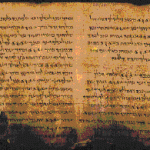
Isaac Butt, Q.C. 4th Sept., 1876 Irish lawyer and Home Rule leader. Right Hon. William Ewart Gladstone, P.C., M.P. 1st Nov., 1877 British Prime Minister and Home Uler crusader.
Ulysses S. Grant, ex-President U.S.A. 30th Dec., 1878 18th President of the U.S.A., on his world tour. Captain Edward E. Potter. 26th April, 1880 Captain of Relief Ship, Constellation, U.S. Navy, sent to relieve famine of 1879-80
Charles Stewart Parnell 3rd Jan., 1882 Irish nationalist leader.
John Dillon, M.P. 3rd Jan., 1882 Irish nationalist politician.
Kevin Izod O’Doherty 10th Aug., 1885
Hon. Patrick A. Collins, Senator, U.S.A. 22nd July, 1887
William O’Brien, M.P. 22nd July, 1887 Irish political leader
Timothy Daniel Sullivan, M.P. 10th Dec., 1887
Thomas Sexton, M.P. 28th Dec., 1887
The Rt. Hon. the Marquis of Ripon, P.C. 16th Jan., 1888 English politician
The Rt. Hon. John Morley, P.C., M.P. 16th Jan., 1888 British author and politician. Chief Secretary of Ireland (1886).
Continue reading “Roll of the Honorary Freedom of the City of Dublin (1876-1999)” »
Eneclann to research Irish Battlefields
September 11, 2008 by Chris
Filed under Articles, Blank Family Tree, Latest News
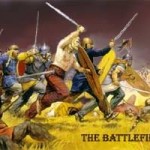 Eneclann has been awarded a contract by the Irish Government (OPW) to carry out historical research into key Irish Battles and Battlefields. Eneclann is part of a consortium that includes the consultancy Headland Archeology Ltd. The project is being undertaken against the backdrop of a growing awareness of, and interest in, battlefield sites not just in Ireland but worldwide. Battlefields have not to date been researched in any great depth in Ireland. There is a need to provide information and to promote the conservation and interpretation of these sites. There are also significant educational and amenity aspects to this project.
Eneclann has been awarded a contract by the Irish Government (OPW) to carry out historical research into key Irish Battles and Battlefields. Eneclann is part of a consortium that includes the consultancy Headland Archeology Ltd. The project is being undertaken against the backdrop of a growing awareness of, and interest in, battlefield sites not just in Ireland but worldwide. Battlefields have not to date been researched in any great depth in Ireland. There is a need to provide information and to promote the conservation and interpretation of these sites. There are also significant educational and amenity aspects to this project.
For further details see the full press release from the OPW or find more Eneclann news.
…
Where to Next?
…
Who Do You Think You Are ? Australia
September 11, 2008 by Chris
Filed under Articles, Blank Family Tree, Latest News
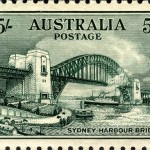 Our friends at Who Do You Think You Are ? Australia have told us that due to record ratings and popular demand, the recent run of the Australian Who Do You Think You Are? series is going straight back on air as a repeat, starting this Friday 22nd February at on SBS TV. In addition to this the station is continuing to show various episodes of the UK series. Episode 1 on Jack Thompson was the highest rating Australian production ever on SBS TV. Eneclann researched Jack’s convict Irish Ancestor, Patrick Byrnes, for this episode.
Our friends at Who Do You Think You Are ? Australia have told us that due to record ratings and popular demand, the recent run of the Australian Who Do You Think You Are? series is going straight back on air as a repeat, starting this Friday 22nd February at on SBS TV. In addition to this the station is continuing to show various episodes of the UK series. Episode 1 on Jack Thompson was the highest rating Australian production ever on SBS TV. Eneclann researched Jack’s convict Irish Ancestor, Patrick Byrnes, for this episode.
You can link to the show’s web site at WDYTYAA
…
Where to Next?
…
SPECIAL PROGRAMS HIGHLIGHT NATIONAL ARCHIVES RECORDS IN OCTOBER
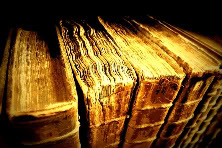
October at the National Archives sees a chain of programs that will be of great interest to genealogists. This series of programs – that are open to the public and free – will highlight records from its holdings.
Among the programs listed:
Introduction to Genealogy
This is the first of a series of monthly lectures that will cover basic genealogy research and researching techniques.
Access to Archival Databases (ADD) for Genealogists
This program introduces genealogists to the National Archives electronic records and will instruct attendees in their use through the (ADD) or Access to Archival Databases online resources.
Help! I’m Stuck
Will be a fantastic program for beginning Genealogists who are not sure where they should begin. This program addresses questions like “IS there a problem that has you stumped?” and “Would you like to explore new directions in your research?
For the dates and times of these programs or for additional information please visit:
http://www.archives.gov/dc-metro/know-your-records/
…
Where to Next?
Blank Family Tree with Step-by-Step Instructions
…
08-145
